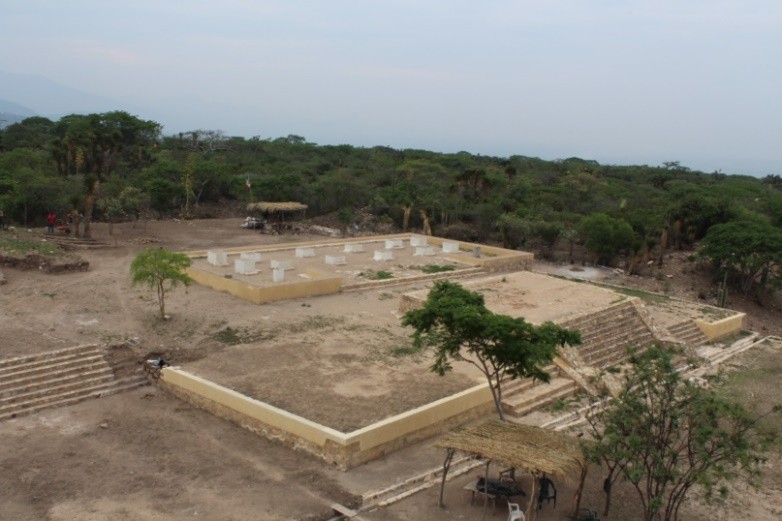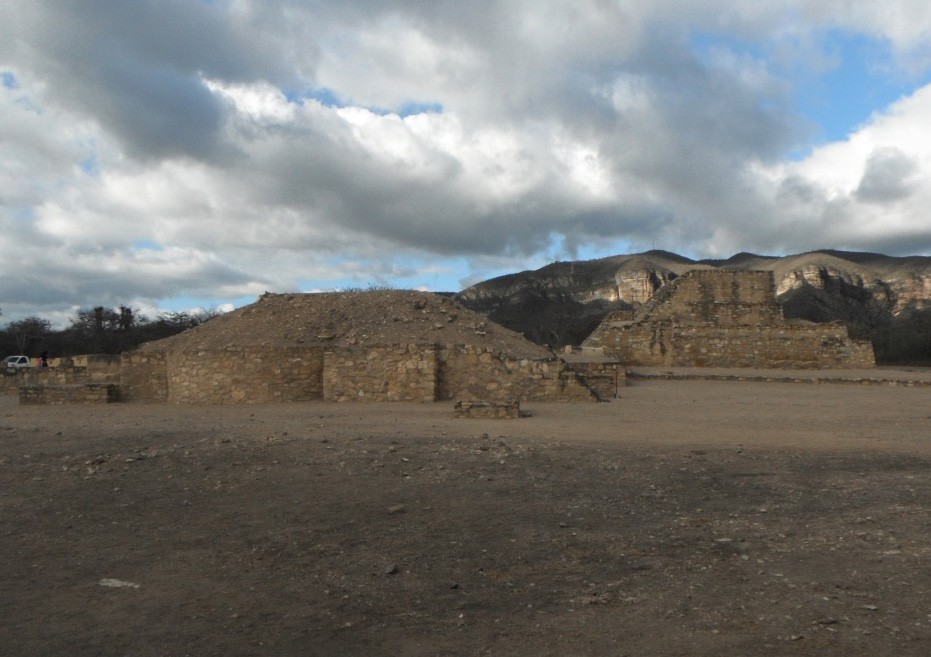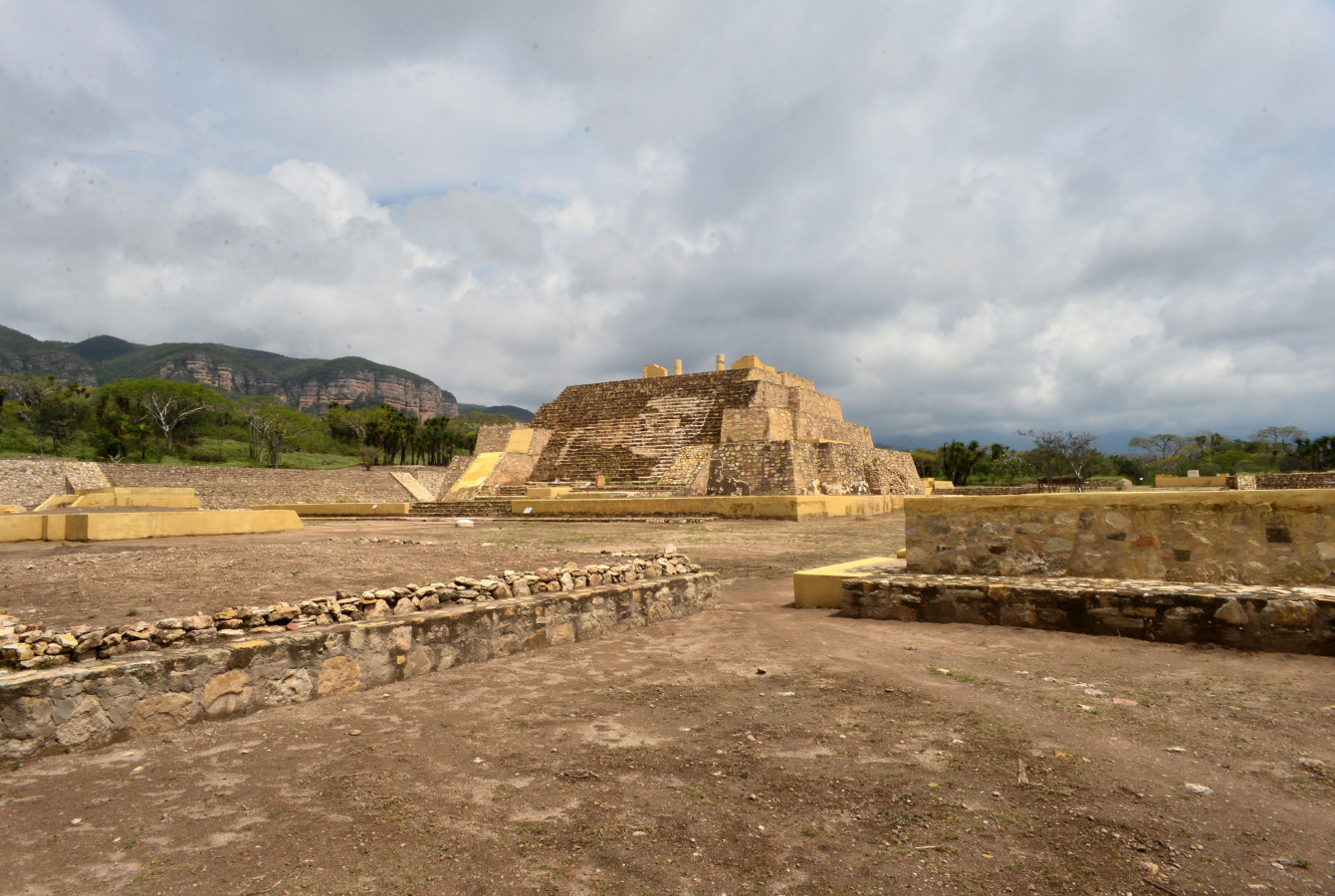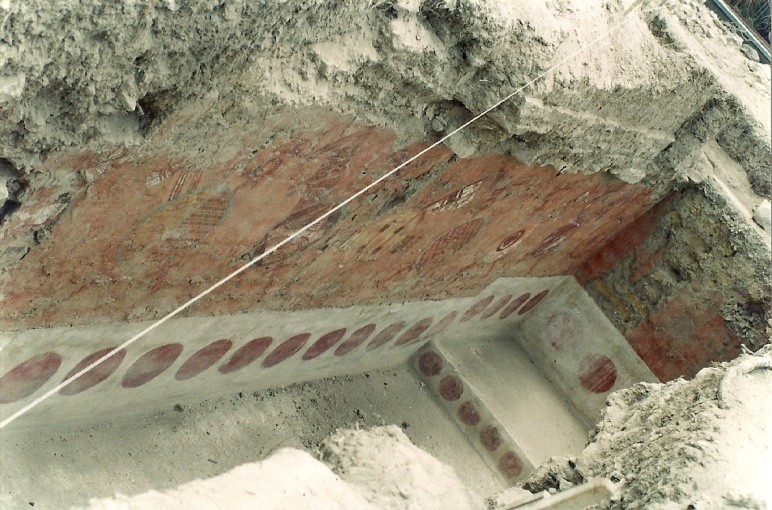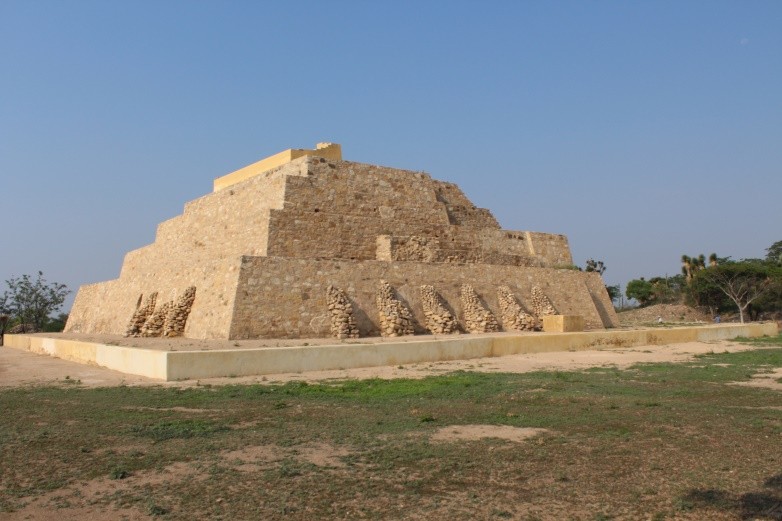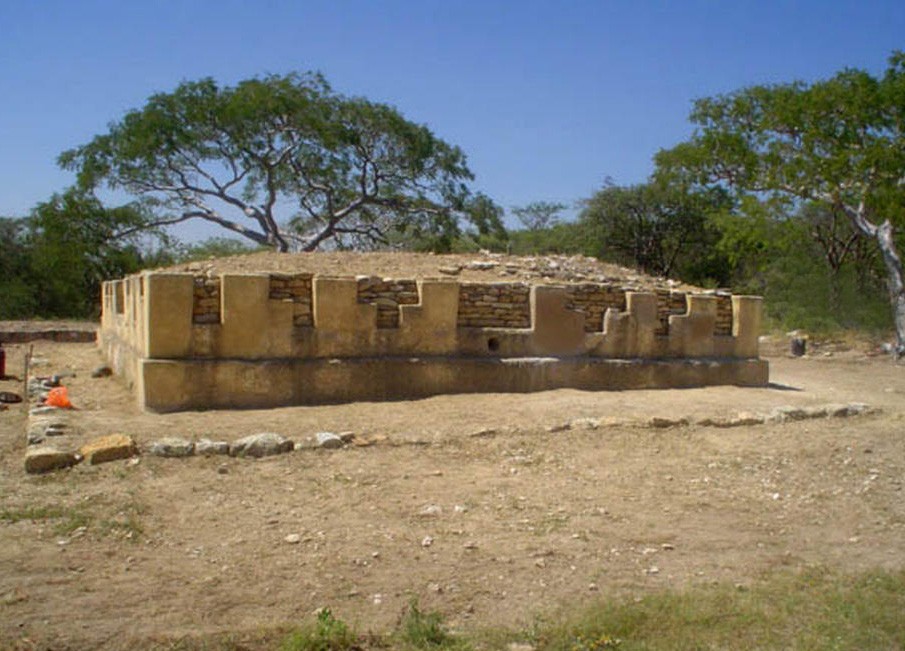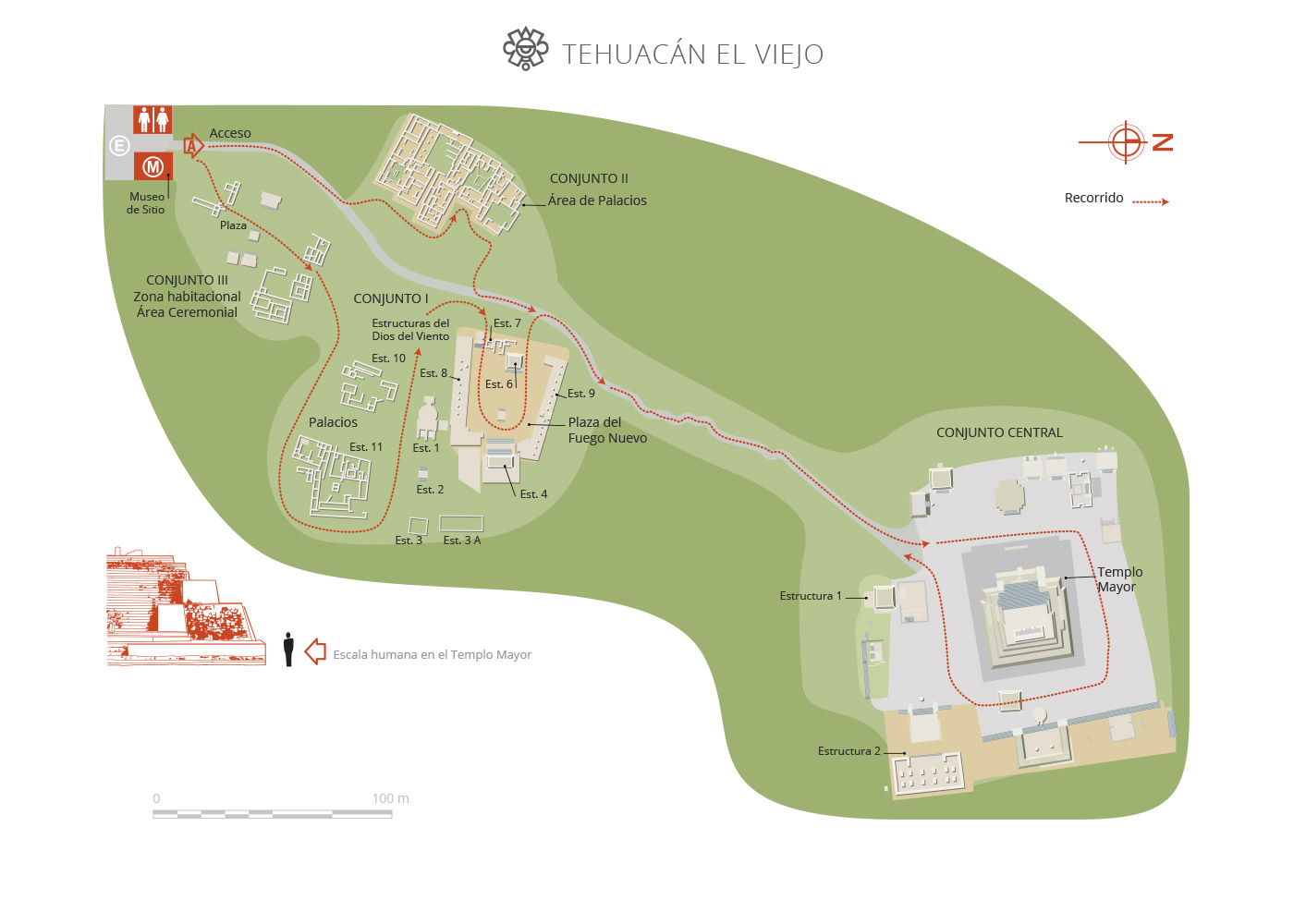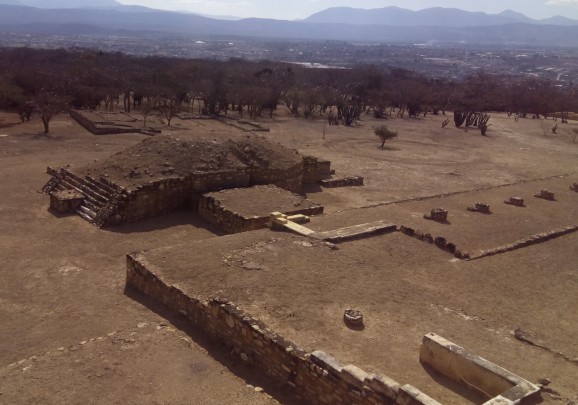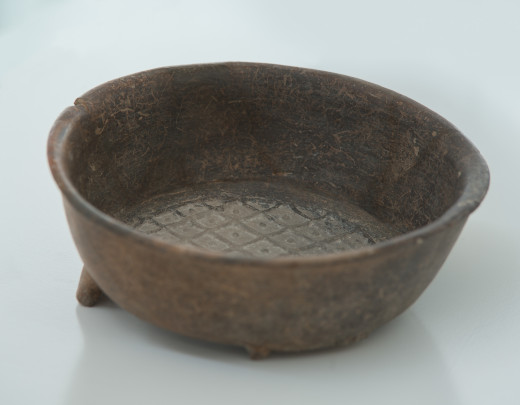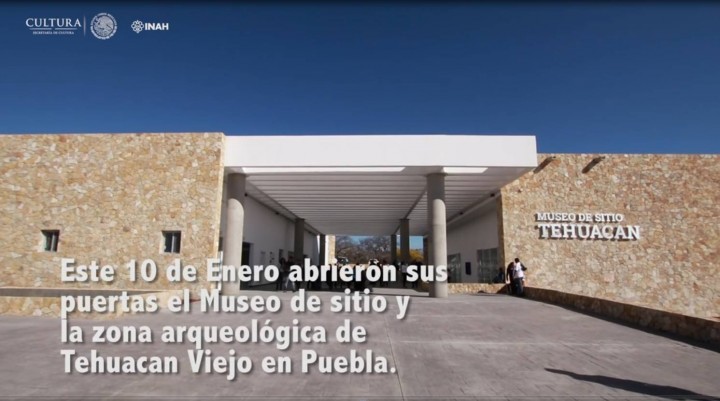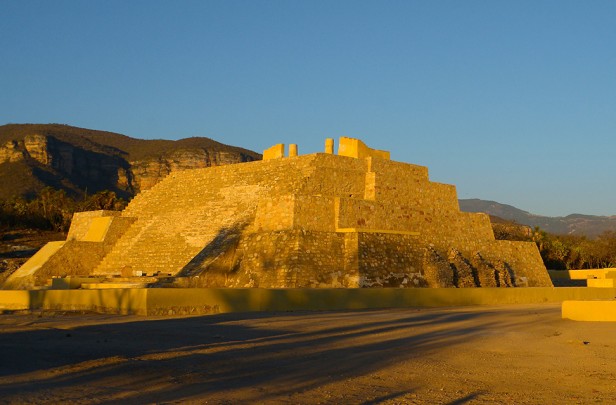Tehuacán el Viejo
The region was fundamentally important in the history of domesticating several plants including maize. During the Postclassic, Tehuacan was the region’s most important site in terms of religion and politics.
About the site
The first reports of the Tehuacan el Viejo archeological site appeared in 1910, when the local historian Joaquín Paredes Colín wrote that “the houses, huts (jacales) or shacks (chozas) of the people of Tehuacan were not grouped or organized in streets, but instead were scattered, as can be seen from some of the foundations that are still preserved, particularly to the north of the ruins of the Temple, in other words towards the hills of the Cerro Colorado.” However it was not until after the looting of the Tehuacan el Viejo (La Mesa) site in 1989 that INAH intervened, appointing the archeologist Gerardo Zepeda García to start excavations. Dr. Edward Sisson carried out a topographical survey in which he recorded 644 structures including 29 pyramidal structures, plus the mural of the Chimales and a variety of architectural features such as palaces, patios and avenues. Noemí Castillo Tejero was appointed to lead the research project in 1993, carrying out excavations and consolidation work which still continue to this day.
Currently 40 of the city’s 311 acres have been excavated. This includes the Temple of the New Fire dedicated to the renewal of time every 52 years. The plaza is flanked by the foundations of the 13 columns of the Ladies of the Night and the nine columns of the Lords of the Day. There is also a temple to Ehecatl-Quetzalcoatl, a central complex where the site’s tallest structure is located known as the Great Temple and the Temple of the Skulls. The site of Tehuacan is distinguished by the complexes of distributed buildings on the slopes of the plateau, where there are interesting plazas designed for ceremonies, as well as dwellings for the governors and priests. The excavations have also uncovered the remains of drains and water pipes.
Currently 40 of the city’s 311 acres have been excavated. This includes the Temple of the New Fire dedicated to the renewal of time every 52 years. The plaza is flanked by the foundations of the 13 columns of the Ladies of the Night and the nine columns of the Lords of the Day. There is also a temple to Ehecatl-Quetzalcoatl, a central complex where the site’s tallest structure is located known as the Great Temple and the Temple of the Skulls. The site of Tehuacan is distinguished by the complexes of distributed buildings on the slopes of the plateau, where there are interesting plazas designed for ceremonies, as well as dwellings for the governors and priests. The excavations have also uncovered the remains of drains and water pipes.
Map
An expert point of view

Mauricio Gálvez Rosalez
Dirección de Salvamento Arqueológico
Practical information
Tuesday to Sunday from 09:00 to 17:00 hrs.
$80.00 pesos
The Archeological Zone is located in the municipality of Tehuacán, Puebla; from Puebla leave the city center and continue east on Avenida Independencia Oriente, follow the federal highway for Oaxaca as far as the town of San Diego Chalma, continue to the San Isidro district to reach Tehuacán Viejo (6 kilometers from the center of the city of Tehuacán).
-
+52 (222) 235 4056
Directory
Director del Museo y responsable de Zona Arqueologica
Mauricio Gálvez Rosalez
This email address is being protected from spambots. You need JavaScript enabled to view it.
+52 (044) 55 27 87 05 62


